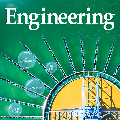In this paper we review the mathematical foundations of convolutional neural nets (CNNs) with the goals of: i) highlighting connections with techniques from statistics, signal processing, linear algebra, differential equations, and optimization, ii) demystifying underlying computations, and iii) identifying new types of applications. CNNs are powerful machine learning models that highlight features from grid data to make predictions (regression and classification). The grid data object can be represented as vectors (in 1D), matrices (in 2D), or tensors (in 3D or higher dimensions) and can incorporate multiple channels (thus providing high flexibility in the input data representation). CNNs highlight features from the grid data by performing convolution operations with different types of operators. The operators highlight different types of features (e.g., patterns, gradients, geometrical features) and are learned by using optimization techniques. In other words, CNNs seek to identify optimal operators that best map the input data to the output data. A common misconception is that CNNs are only capable of processing image or video data but their application scope is much wider; specifically, datasets encountered in diverse applications can be expressed as grid data. Here, we show how to apply CNNs to new types of applications such as optimal control, flow cytometry, multivariate process monitoring, and molecular simulations.
翻译:在本文中,我们审查进化神经网(CNNs)的数学基础,目标是:(一) 突出与来自统计、信号处理、线性代数、不同方程式和优化的技术之间的联系,(二) 解开基础计算,以及(三) 确定新的应用类型。CNN是强有力的机器学习模型,强调网格数据的特点,以作出预测(回归和分类)。网格数据对象可以作为矢量(1D)、矩阵(2D)或强(3D或更高维)进行表述,并可以包含多个渠道(从而在输入数据表示中提供高度的灵活性)。CNN通过与不同类型的操作者进行进化操作,突出电网数据的特点。操作者强调不同类型的特征(如模式、梯度、几何测量特征),并通过优化技术来学习。换句话说,CNNPN试图确定最佳操作者,以最佳方式将输入数据映射到输出数据。一种常见的错误观念是,CNNCM只能处理图像或视频数据,但其应用范围要大得多;具体地说,将数据流应用方式显示,我们如何将新的电网格应用作为最佳应用,从而显示,从而显示,我们如何将数据流到RIS的多式应用。




